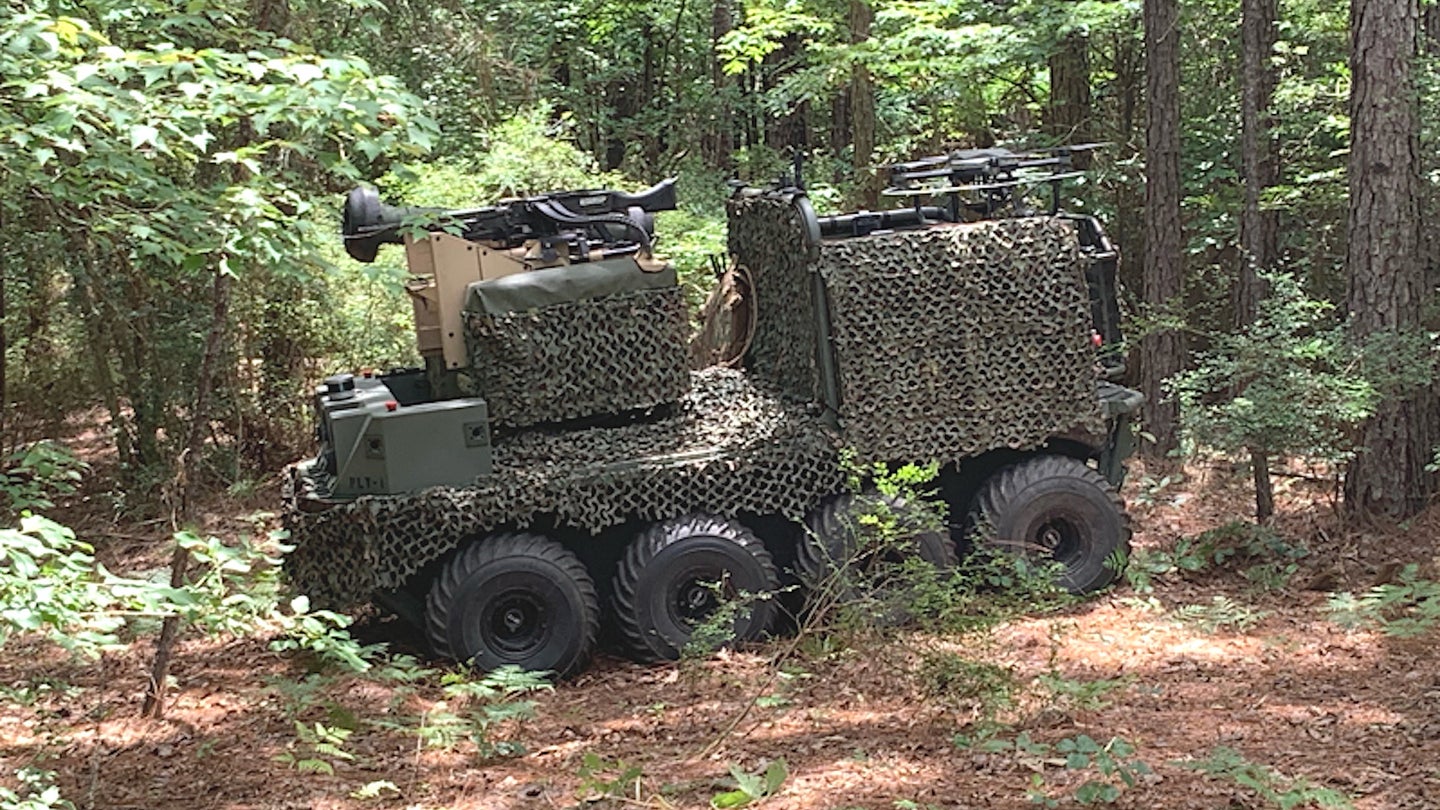- Reaction score
- 5,988
- Points
- 1,160
I find these various UGVs (as well as small, tube launched UAVs/Loitering Munitions) very interesting and they possibly have some great potential uses in our future force. They are light and small compared to manned vehicles so well suited to an expeditionary Army like ours. They have good speed (40mph/65km) and range (750km?). They also have low detection signatures. For an Army that spends a large percentage of its budget on personnel, trading boots for bolts might make good sense.
'Enemy' Unmanned Ground Vehicles Are Now Facing-Off Against Army Soldiers In Training
The unmanned vehicle made a helicopter landing zone unusable, which could happen during a real battle as adversaries field similar capabilities.www.thedrive.com

The U.S. Army says mock enemy troops, also known as the Opposing Force, or OPFOR, have employed unmanned ground vehicles in an exercise for the first time. The OPFOR used them to help deny access to possible helicopter landing zones and set up blocking positions along roads, among other tasks.
The exercise in question took place at the Army's Joint Readiness Training Center (JRTC) at Fort Polk in Louisiana in September. The JRTC's resident OPFOR unit is 1st Battalion (Airborne), 509th Infantry, which is also known by the nickname Geronimo. This battalion received two General Dynamics Land Systems (GLDS) unmanned Multi-Utility Tactical Transports (MUTT) to help it square off against soldiers from the 3rd Brigade Combat Team, 101st Airborne Division.
“With these units, the human survivability rate increases significantly,” Sergeant First Class Eugene Lackey, a soldier from Geronimo's Pathfinder Company, said about the exercise. “This system allowed us to close with and destroy the enemy safely from a distance. It [also enabled] us to the find the enemy before he could find us. It is a great tool and I wish we could have it for little bit longer to really see how we can change the way wars are fought.”
The MUTTs that Geronimo used in the exercise are 8x8 wheeled unmanned ground vehicles (UGV) in the one-and-a-half-ton class. GDLS also offers smaller 4x4 and 6x6 versions, as well as tracked variants in all three size classes. All of the members of the MUTT family have hybrid-electric propulsion systems that offer improved fuel efficiency compared to similarly-sized vehicles powered by more conventional internal combustion engines. In addition, this allows them to operate very quietly at low speeds and while in static positions, and reduces their thermal signature.
Geronimo's MUTTs were each configured with a Common Remotely Operated Weapon Station (CROWS) equipped with a 7.62mm M240 machine gun and a Javelin anti-tank guided missile (ATGM) launcher, as well as a tethered quadcopter unmanned aerial system. The drone has an array of video cameras that allow it to provide additional surveillance and reconnaissance capacity, as well as act as a signal relay, extending how far the UGVs can operate from their human operators.

US ARMY
One of the Army's MUTTs during a different exercise in 2020.
The operators control the UGVs through a software suite that can be installed on various types of computer systems, including ruggedized laptops. The MUTTs are capable of some degree of semi-autonomous operation, including moving to designated coordinates, but, at least at present, humans are in the loop at all times and are in direct control of the onboard weapons and sensor systems.
The MUTTs are part of an experimental fleet the Army has been using as part of Project Origin, an effort to explore future concepts of operations involving UGVs. The service is in the process of acquiring various tiers of unmanned ground platforms to support a variety of missions. In 2019, the Army had actually selected GLDS' MUTT as the winning design for its Squad Multipurpose Equipment Transport (SMET) program, but a formal protest from another entrant, Howe and Howe, led to the scrapping of that deal and the rebooting of the competition
"The Geronimo force used the Project Origin platform to block a key intersection for 36 hours, an effort that benefitted from Origin’s low heat signature while conducting long hours of battery-powered 'silent watch,'" according to the Army. "In addition, Geronimo used the Project Origin vehicles to deny helicopter landing zones and conduct route reconnaissance."
On the other hand, how well will they work in an EW environment? Will their small size limit their ammo carrying capability too much so that their supporters are constantly having to re-arm them taking away their advantage of stealth and reduced risk to the troops?
How would you envision integrating machines like this into the Army in a significant way? Is this something we should really consider for Force 2025/2030 as a way to leapfrog the CA into the future rather than just trying to catch ourselves up to yesterday?







